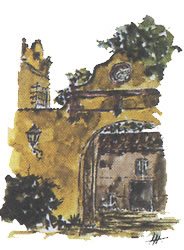ASTM E1153-25. Standard Test Method for Efficacy of Sanitizers Recommended for Inanimate, Hard, Nonporous Non-Food Contact Surfaces.
Test Accredited by ENAC (Spanish National Accreditation Entity).
This test method aims to evaluate the antimicrobial efficacy of disinfectant products, intended for precleaning (lightly soiled), inanimate, hard, non-porous surfaces that do not come into contact with food, to determine if a chemical agent can be used as a cleaner- disinfectant, from a percentage reduction of test organisms in treated supports compared with controls.
The product to be analyzed is evaluated by inoculation, at least, on five support discs (for each combination of test substance to be analyzed) with one or more of the following test organisms: Klebsiella pneumoniae (ATCC 4352), Enterobacter aerogenes (ATCC 13048) and/or Staphylococcus aureus (ATCC 6538) and, after drying thereof, proceeds to the treatment with the substance to be tested. To do this, the product is incorporated into the five dry discs previously inoculated, successively one after the other at intervals of one minute between them. The test may or may not incorporate an interfering substance, depending on the manufacturer's instructions, adding 5% of fetal bovine serum to the bacterial culture for those formulations intended for slightly soiled surfaces.
The results obtained in the plate counts (CFU/disk) are averaged and converted to log10, thus determining the log10 of the reductions in the assay, whose significance is evaluated by the Wilcoxon statistical method. In this way, the activity of the test substance is evaluated with respect to the controls, reporting the percentage reduction for each support set.
The client must choose a test concentration, the indications on how to add the product, and whether or not it is desired to incorporate interfering substance on the bacterial inoculum. The applicant for the test must state these requirements in the submission form.



